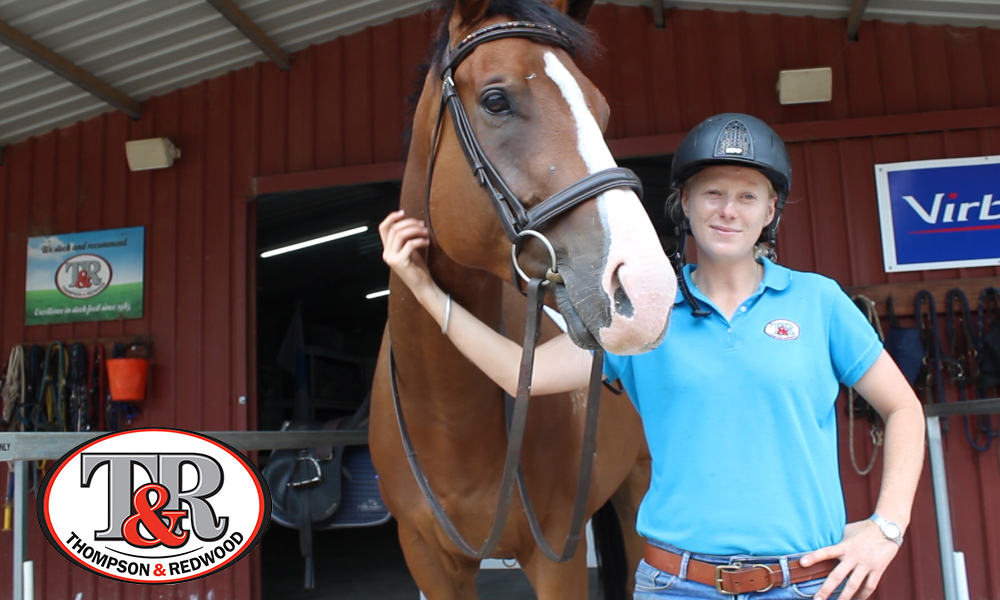
18 Jan Pre-Season Training and Management: Sophie Warren
We’ve had our little break over the Christmas period and now it’s time to get the horses up and running for the coming competition season. Where do we start? The horses have been on the scales and for the ones that finished the season a little lighter on the news is great, but for three-star horse Eminence, that extra 35kg has to go!
The pre-season starts with good quality management during the rest period. There is never time to be wasted when it comes to managing a team of event horses so we begin the summer break with a post-season assessment with our vet and other team members to ensure we’ve got their diets and management programs right for the summer period as well as stocking up on all the essentials for the hotter days.
The older horses have a little time off over the summer holidays but for them, the joint management remains relatively unchanged to give their older joints some recuperation time while supported with all the best products. For the young horses, it is a great time for training and breaking new ground without the deadline of getting a movement or new piece of training right in time for the competition next weekend! We like to take them on extra outings for exposure and test our buttons in new places, as well as make sure we have a clear idea of the training goals for each of them for the summer period.
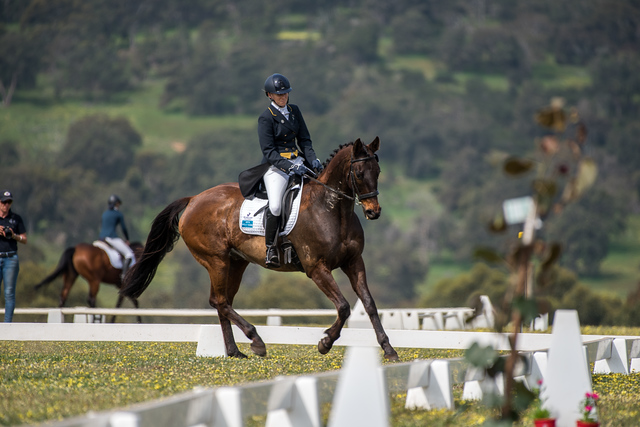 Feeding and Fitness
Feeding and Fitness
We love to use the summer season to put a little extra weight on the horses and make sure they come into the competition season feeling fabulous (and usually a little fresh and over the top…the first few shows can be exciting!!). The horses that are having less work will have their rations of T&R Claytons Pellets reduced slightly and their hay intake increased.
Horses that need to increase weight over the summer period will maintain a fairly high ration of pellets as well as adlib hay and perhaps some extra oil or canola meal if required. Claytons is a great source of fat and fibre without making them too energetic and it is very gentle on stomachs, with minimal starch and sugar.
As the horses come back into work their feeding is assessed each week according to workload and energy levels. The first few weeks might spark a little reduction in feed in order to help them transition to riding again without too much excitement, while for some an increase in feed for extra energy is required. T&R Pony Maintenance cubes are also a fabulous option for a little extra protein and energy without blowing their brains (or the budget!) and for those requiring a bit more energy as their fitness levels increase we love the T&R Oat-Free muesli for performance horses.
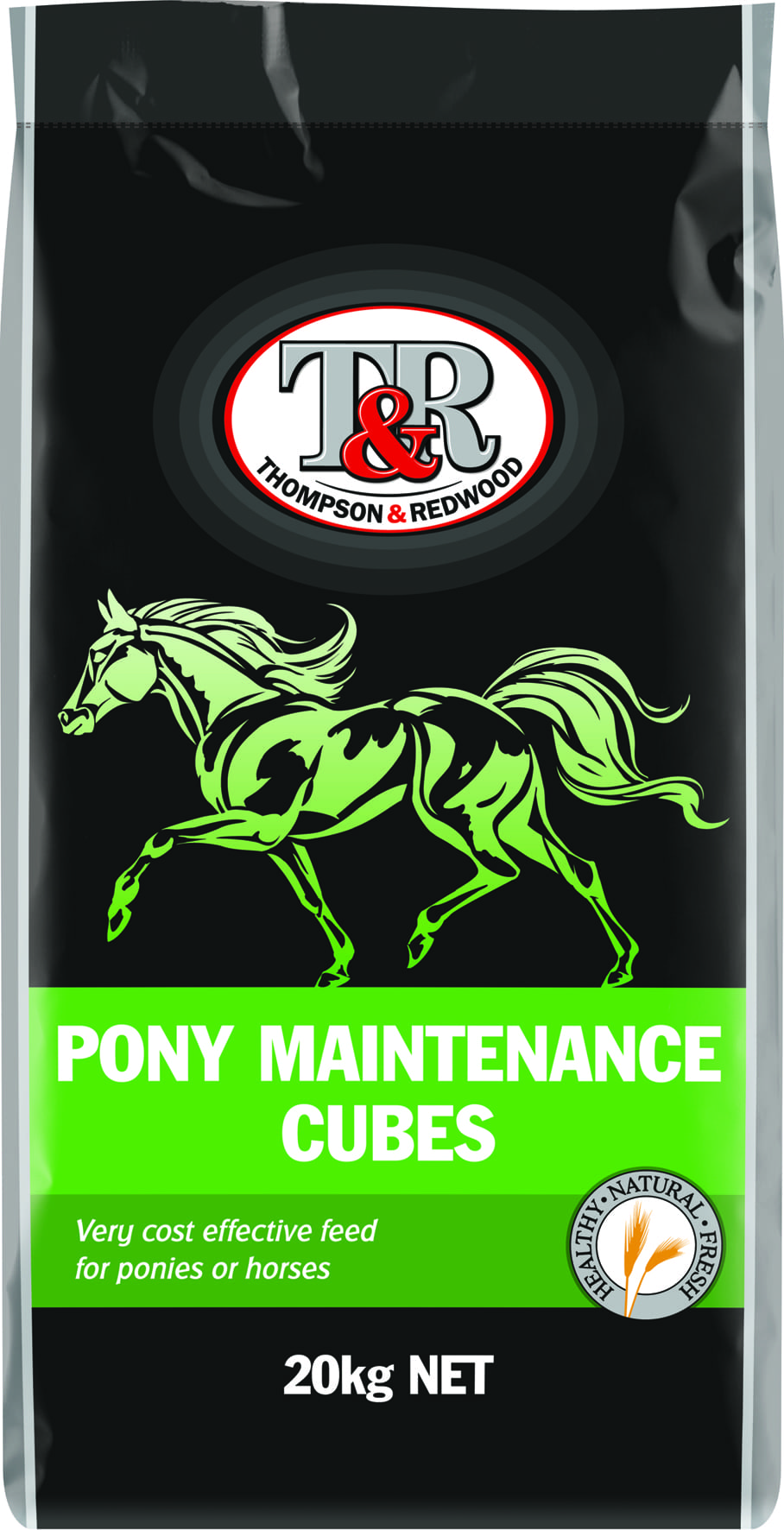 It’s really important that their feeding always reflects their workload and they changes are made extremely gradually. It takes around 2 weeks for a horse’s digestive system to adjust to new feed so it is important to make changes gradually over several weeks to guard against physical stress, colic and/or gastric ulceration. Observe your horse carefully during the weeks of change over so you can decide if your new feed seems to be agreeing with them and over the coming months keep a log of the changes you see so you can assess how things are going and adjust feeding quantities and products accordingly.
It’s really important that their feeding always reflects their workload and they changes are made extremely gradually. It takes around 2 weeks for a horse’s digestive system to adjust to new feed so it is important to make changes gradually over several weeks to guard against physical stress, colic and/or gastric ulceration. Observe your horse carefully during the weeks of change over so you can decide if your new feed seems to be agreeing with them and over the coming months keep a log of the changes you see so you can assess how things are going and adjust feeding quantities and products accordingly.
Increasing the workload
Depending on the length of break your horse has had, you’ll need to carefully and gradually re-condition him to his ridden workload. If you’ve only given him a one or two weeks off you can safely resume fairly quickly and just use the first week or two to gradually reintroduce the work and check your buttons are still effective before powering on with your training. A horse that has had 4-6 weeks off will need considerably more time to come back into work slowly with a gradual increase in intensity. A good rule of thumb is to use the same amount of time to build your workload up as the amount of time your horse has rested (this works up until about the 6-8 week mark). For example, if your horse had two weeks off, use two weeks to gradually increase your work back to where you were when he had his rest. If he had 6 weeks off, do it over a 6 week period.
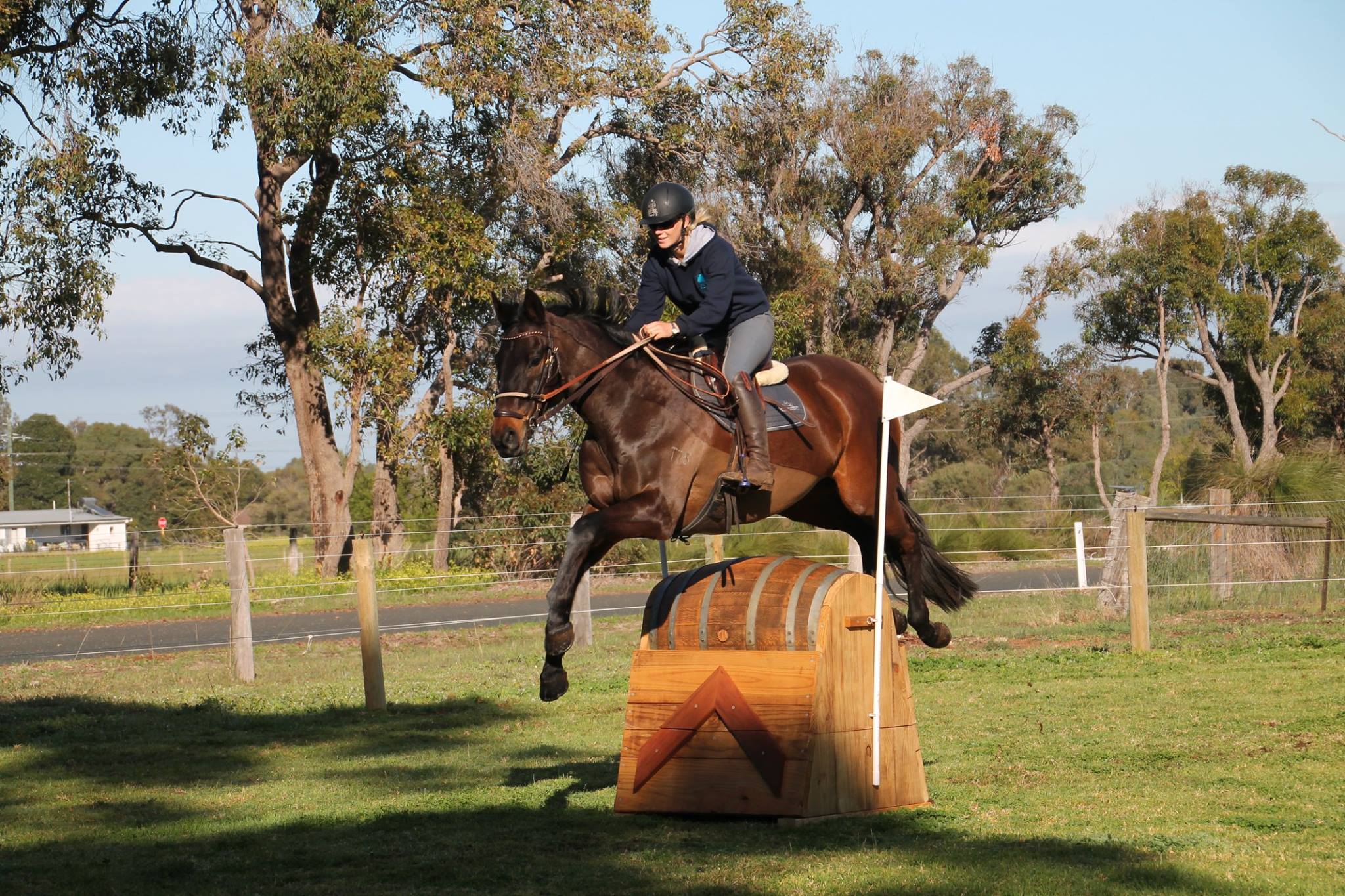 The increase in workload should never exceed about 10% per week, which is quite small if you think about it. Always use caution when increasing work, it’s much better to take a longer period of time to get fit than to have an injury setback because you tried to hurry the process. We like to spend the first couple of weeks just working out and about, with a little flat work to check our buttons are working well.
The increase in workload should never exceed about 10% per week, which is quite small if you think about it. Always use caution when increasing work, it’s much better to take a longer period of time to get fit than to have an injury setback because you tried to hurry the process. We like to spend the first couple of weeks just working out and about, with a little flat work to check our buttons are working well.
Varied terrain is great for conditioning legs (especially for event horses who will have to spend much of their competition life not in a perfectly flat arena) and works wonders for improving balance, proprioception and coordination. This will also serve to expose them to different things and keep it interesting for you both. We introduce more serious dressage work and some jumping after the first few weeks and then begin to build up towards our requirements for the competition season.
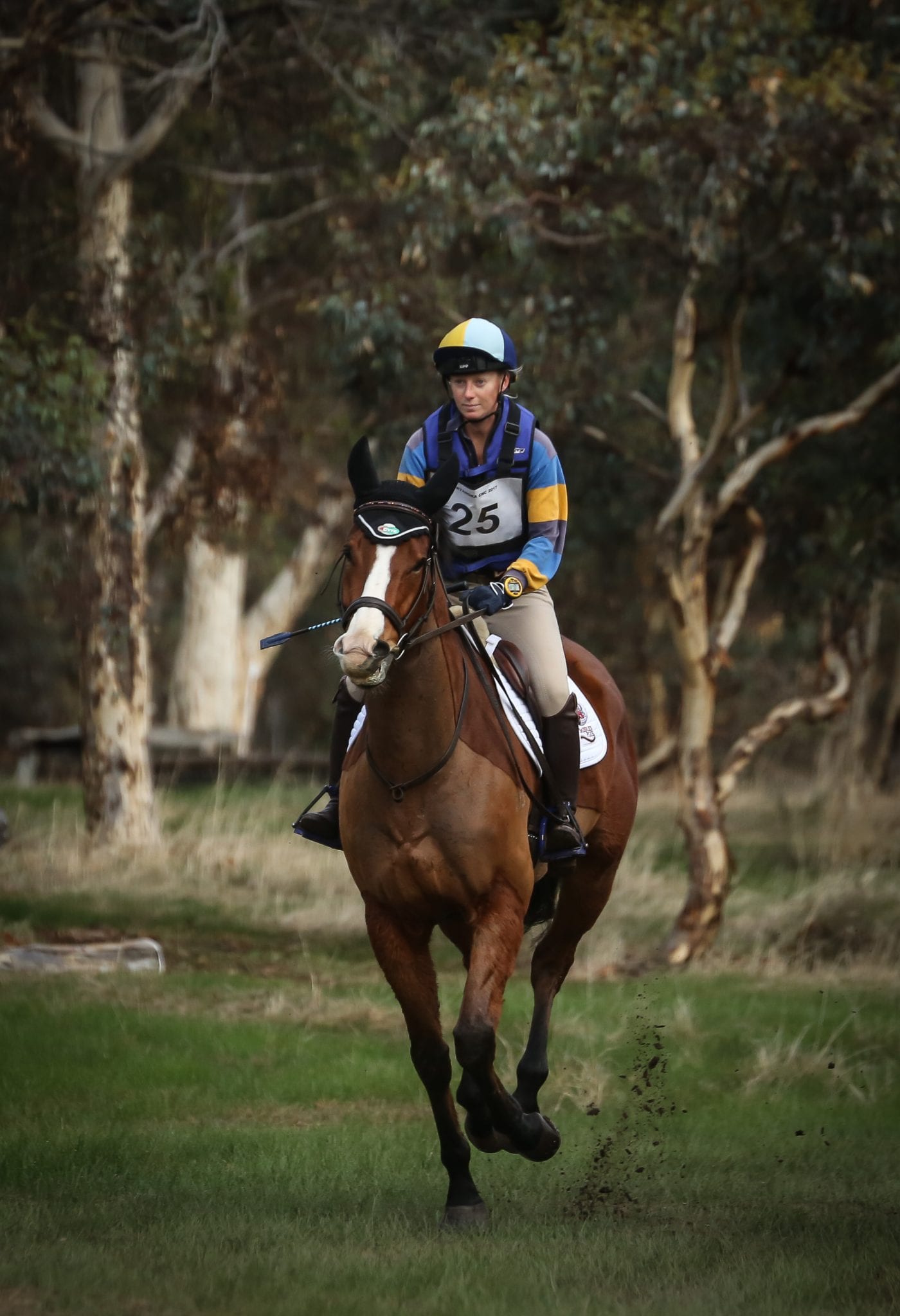 It takes about 4 days for your horse’s body to fully recover from a heavy workout so keep this in mind when you plan your week. If you’re going to do a fitness session on Monday, save the next fitness session until Thursday or Friday and don’t do a heavy jumping session the day after. Try to work a different set of muscles each day, for instance, you might work on your lateral work on Tuesday, so on Wednesday work on the adjustability in your trot and developing the extended paces, then have a light jump on Thursday followed by a ride out, or your fitness session on Friday. It keeps it interesting and helps to allow recovery time for your horse.
It takes about 4 days for your horse’s body to fully recover from a heavy workout so keep this in mind when you plan your week. If you’re going to do a fitness session on Monday, save the next fitness session until Thursday or Friday and don’t do a heavy jumping session the day after. Try to work a different set of muscles each day, for instance, you might work on your lateral work on Tuesday, so on Wednesday work on the adjustability in your trot and developing the extended paces, then have a light jump on Thursday followed by a ride out, or your fitness session on Friday. It keeps it interesting and helps to allow recovery time for your horse.
If you can incorporate hills or water work for your fitness you’ll save your horse’s legs hugely. The net-gain from a hill work session or wading session far outweighs the gain from galloping around on the flat and massively reduces the miles and concussion required on their legs. We head to the shallow parts of the river for wading work at walk and trot which is great for exposure, fitness and water jump training! Just remember – it is always a balance between fitness and soundness and there is no point having the fittest horse on the circuit if his legs are sore or he’s not going to last into his late teens. You want your horse just fit enough for the task, so let the first few events of the season guide you and help you finesse your fitness. An over-fit horse is of no advantage to anyone.
Most importantly, enjoy the summer with your horse! We all do this for fun, so it might as well be enjoyable. Take time to go to the river or the beach, or for a ride out with your friends, and never, ever, take yourself too seriously. Your horse will thank you for it and you’ll probably improve at a greater rate even though you’ve spent less hours perfecting your circles.



indiana freeman
Posted at 06:06h, 23 Marchvery helpful
Ally Doumany
Posted at 02:45h, 12 MayThanks Indiana, we’re glad you found it helpful